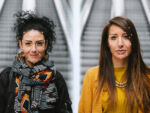5 life-saving Australian inventions you didn’t know about
Australia celebrates a robust history of medical research and development. Here are five lesser-known inventions that have contributed to the global good.
Australia has long punched above its weight class in the field of medical research. You’re probably already aware of many research and development triumphs in that area: the HPV vaccine, the discovery of helicobacter pylori, the pacemaker, the ultrasound, the effective administration of penicillin and the cochlear implant are all well-celebrated Australian breakthroughs.
But there are some lesser-discussed inventions and discoveries that are equally exciting. Here are 5 Australian inventions that have contributed to saving lives globally:
1. Sunscreen: While the history of attempts at sunscreen is as long as the history of humans labouring beneath the sky, the first “sunburn preventative cream” proven to be effective was created in the 1920s by Milton Blake, a chemist based in Sydney. Today, we know that daily application of sunscreen reduces the risk of skin cancer by almost 40%.
2. Detecting dangerous heavy metals: In 1952, Sir Alan Walsh, an Englishman living in Melbourne, first demonstrated the feasibility of atomic absorption spectroscopy. This chemical analysis breakthrough is still used 70 years later to test contaminant levels in water and soil samples, including lethal pollutants like lead and mercury.
3. Continuous positive airway pressure machines: Dr Colin Sullivan invented the first nasal CPAP machine in 1980, a product which has become the gold standard for the treatment of obstructive sleep apnoea. The Australian company ResMed was founded in 1989 to commercialise production and market these devices, which are now used all over the world.
4. The first drug effective in treating all strains of the flu: Zanamivir was created in the 1990s in a collaboration between CSIRO and researchers from the Victorian College of Pharmacy and the Australian National University. It has been used internationally since 1999 and is now available in in 70 countries. Its invention prompted researchers to investigate a new class of anti-viral medicines.
5. Advancements in water purification: CSIRO researchers have recently developed a new method of water purification. In a demonstration in 2018, the research team made water from Sydney Harbour potable. Currently, the WHO estimates that water sources contaminated with faeces are used for drinking water by 2 billion people globally.
ResearchMaster has been powering vital Australian research for decades. To find out more, contact us.

